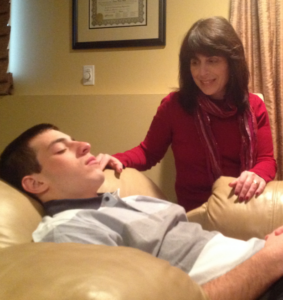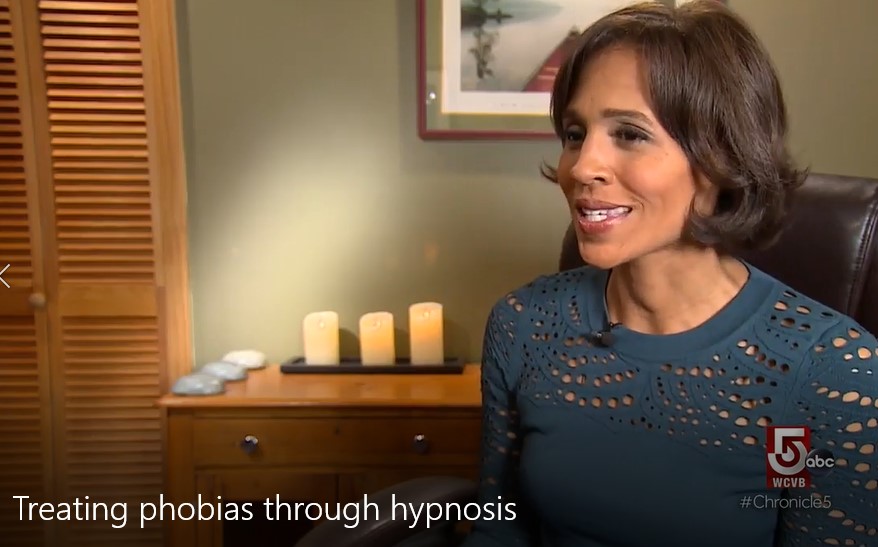
 This is a truly ground-breaking study. It’s the first one to study the effects of various areas of the brain before and after hypnosis in people with dental phobias. While it’s a relatively small sample size, it’s a push in the right direction. Out of the 24 people involved in the study, 12 were dental phobics and the other 12 were the control group.
This is a truly ground-breaking study. It’s the first one to study the effects of various areas of the brain before and after hypnosis in people with dental phobias. While it’s a relatively small sample size, it’s a push in the right direction. Out of the 24 people involved in the study, 12 were dental phobics and the other 12 were the control group.
This study illustrates the fact that anxiety-provoking stimuli can be reduced via hypnosis. This includes the actual dental surgery, endodontic treatments, and a low amount of anesthesia. It also shows that the fear centers of the brain changed as well. Using fMRI (functional magnetic resonance imaging) various fear structures of the brain were researched.The conclusion so far is hypnosis is a powerful method inhibiting reaction of fear circuitry structures in dental phobics. [more]
By: Hypnosis Training Academy

 There has been a great deal of published research into the use of hypnosis with fears and phobias. Occasionally, direct suggestions for relief of anxiety or phobias prove effective.
There has been a great deal of published research into the use of hypnosis with fears and phobias. Occasionally, direct suggestions for relief of anxiety or phobias prove effective.
When direct suggestions are ineffective, there are many other hypnotic techniques that may be helpful. Actually, simply the process of induction and deepening generally relieves anxiety.
Hypnotically-facilitated systematic desensitization, a neurolinguistic procedure, is very helpful. The individual learns to gain a sense of internal control over the fearful or anxiety-producing trigger.
Advantages of hypnotic desensitization over traditional behavioral desensitization include enhanced scene visualization and the ability to give posthypnotic suggestions to encourage behavioral responses to the situations that were imagined.
Mental rehearsal of successfully coping with tense situations is another method for treating anxiety and phobic disorders. When low self-esteem is determined to be an aspect of the problem, ego-strengthening methods may be employed.
Because hypnosis exploits the intimate connection between mind and body, it provides relief through improved self-regulation  and also beneficially affects the experience of self-mastery.
and also beneficially affects the experience of self-mastery.
Hypnosis may be used to age regress patients to experiences immediately before they began to feel anxious. In this way the sequence of reactions can be studied by the individual.
This may aid in pinpointing the situations that elicit anxiety as well as the internal dialogue and imagery that evoke problematic responses. Age regression to times prior to the development of the phobia, when the patient was coping successfully, provide a resource state that can be anchored and brought to consciousness in times of high stress.
Age regression in hypnotherapy provides access to identifying causative conflicts or past experiences that are beyond conscious awareness. When traumatic events are found to be associated with phobic reactions, it may be profitable to facilitate an age regression and abreact the feelings associated with the experience.
Hypnosis has proven effective in the management of preoperative and postoperative anxiety, including situations in which the patient is in a crisis period. This can also apply to the treatment of dental phobia.
One common example of how hypnosis or hypnotherapy can be used to treat anxiety is in work with medical conditions and treatments that characteristically evoke significant anxiety.
These include dental procedures, surgical and post-surgical situations, lumbar punctures and bone marrow aspiration, chronic headaches, cancer, burn pain, gastrointestinal disorders, nausea, respiratory disorders, tinnitus, and obstetrics/gynecology.
 One example is reducing anxiety caused by magnetic resonance imaging (MRI), a medical diagnostic procedure which requires a patient to lie in an enclosed space for about one hour.
One example is reducing anxiety caused by magnetic resonance imaging (MRI), a medical diagnostic procedure which requires a patient to lie in an enclosed space for about one hour.
This enclosure induces panic and claustrophobic responses in up to 10% of patients undergoing the MRI procedure. There have been many failed diagnostic studies due to patient intolerance, claustrophobia and panic. Hypnosis has been used successfully to alleviate these reactions.
It is interesting to note that phobic patients have been shown to be, on average, more hypnotizable than others. The essence of the phobic experience is not unlike that of the event of hypnosis, and the phobic experience might be a spontaneously occurring panic-filled trance-like or dissociative experience. Hypnotherapy assists the patient to learn more about his dissociative capacity and to learn to control it.
By: Diane Zimberoff
My first emetophobia (fear of vomiting) client, Amanda, was in 2010. She was a young mother of an infant child and had been experiencing the fear of vomiting for many years. After finally confiding with her primary physician, she was referred for hypnotherapy. Amanda had no experience with hypnosis but was desperate for relief.
Hypnosis is powerfully relaxing, and helps individuals to tap into an open, receptive level of thought. Once clients are guided into this meditative bliss they receive direct or indirect suggestions as well as metaphors and creative imagery supporting relief of irrational fear.
Individuals struggling with extreme levels of worry, stress, or fear tend to do really well with hypnosis, and this was the case with Amanda. After the initial session, she described a refreshing emotional separation, as though there was now emotional distance between how she felt at the conclusion of the session compared to before. Throughout the course of her remaining two office visits this emotional distance increased and Amanda was able to gradually become more involved in her child’s care and was not preoccupied with vomiting.
Months later, Amanda graciously agreed to appear on my TV show and I posted a short clip of her interview on my website. That video has touched the lives of many. In the last 5 years I have not only helped dozens of local clients with this emetophobia, but there have also been many not so local clients who benefited as well.
I created a long-distance program that extends the same in-office experience Amanda had to those across the country. In fact, Amanda has offered to contact these individuals to support them through the process. Emetophobia is a devastating phobia which significantly affects the quality of life. As a Consulting Hypnotist and a Registered Nurse I have been greatly fulfilled to be able to offer this relief to my clients.
I will close with a heartwarming example of a family desperate for relief. A family from Albany, NY saw Amanda’s video online and immediately contacted me. Initially, because of the geographical limitations, I suggested the long-distance approach, but they preferred the same experience that Amanda received. They spent 6 hours on the road for each office visit and at the time of this writing the young woman from New York is doing very well.
By: Paul Gustafson RN CH

 This is a truly ground-breaking study. It’s the first one to study the effects of various areas of the brain before and after hypnosis in people with dental phobias. While it’s a relatively small sample size, it’s a push in the right direction. Out of the 24 people involved in the study, 12 were dental phobics and the other 12 were the control group.
This is a truly ground-breaking study. It’s the first one to study the effects of various areas of the brain before and after hypnosis in people with dental phobias. While it’s a relatively small sample size, it’s a push in the right direction. Out of the 24 people involved in the study, 12 were dental phobics and the other 12 were the control group.

 There has been a great deal of published research into the use of hypnosis with fears and phobias. Occasionally, direct suggestions for relief of anxiety or phobias prove effective.
There has been a great deal of published research into the use of hypnosis with fears and phobias. Occasionally, direct suggestions for relief of anxiety or phobias prove effective. and also beneficially affects the experience of self-mastery.
and also beneficially affects the experience of self-mastery. One example is reducing anxiety caused by magnetic resonance imaging (MRI), a medical diagnostic procedure which requires a patient to lie in an enclosed space for about one hour.
One example is reducing anxiety caused by magnetic resonance imaging (MRI), a medical diagnostic procedure which requires a patient to lie in an enclosed space for about one hour.







